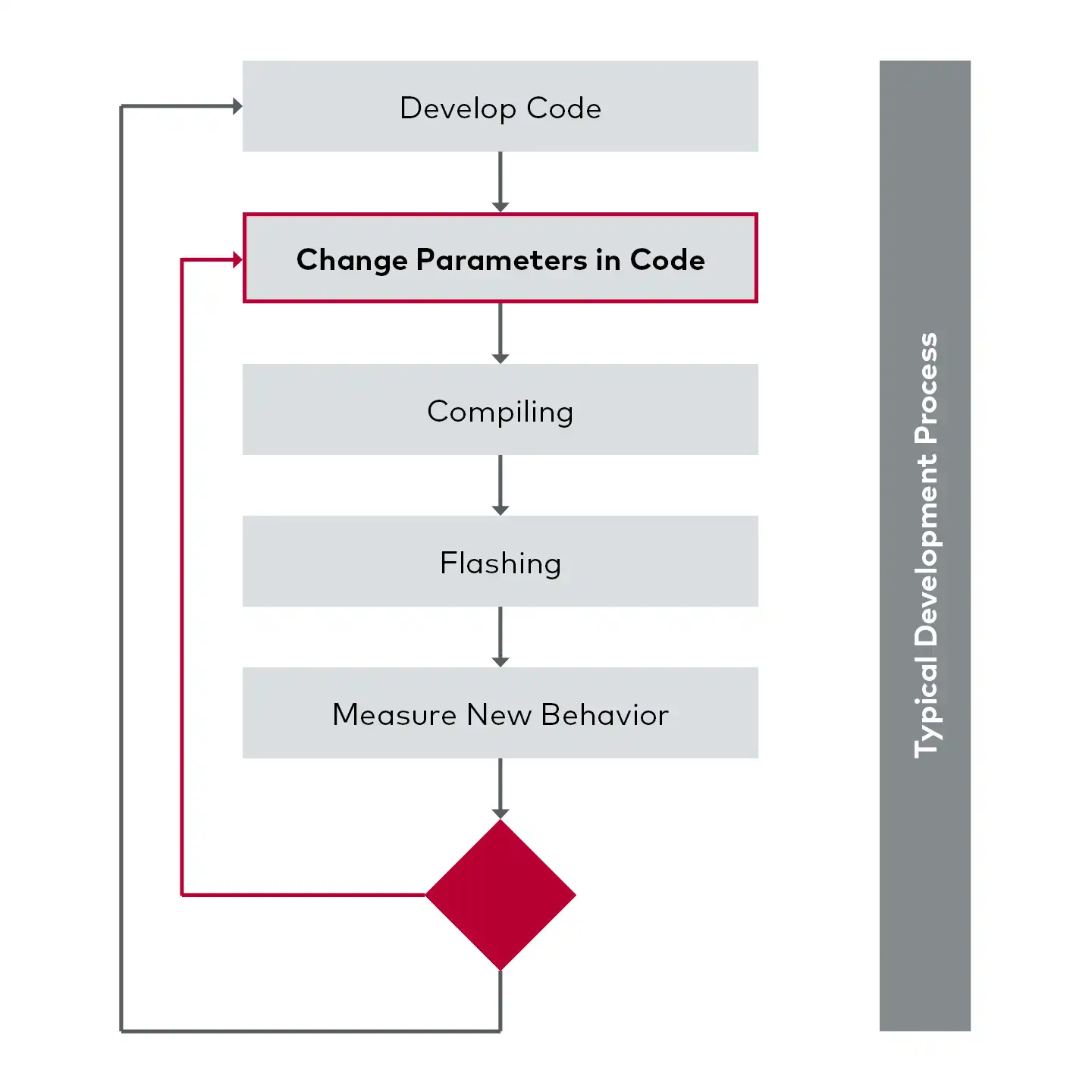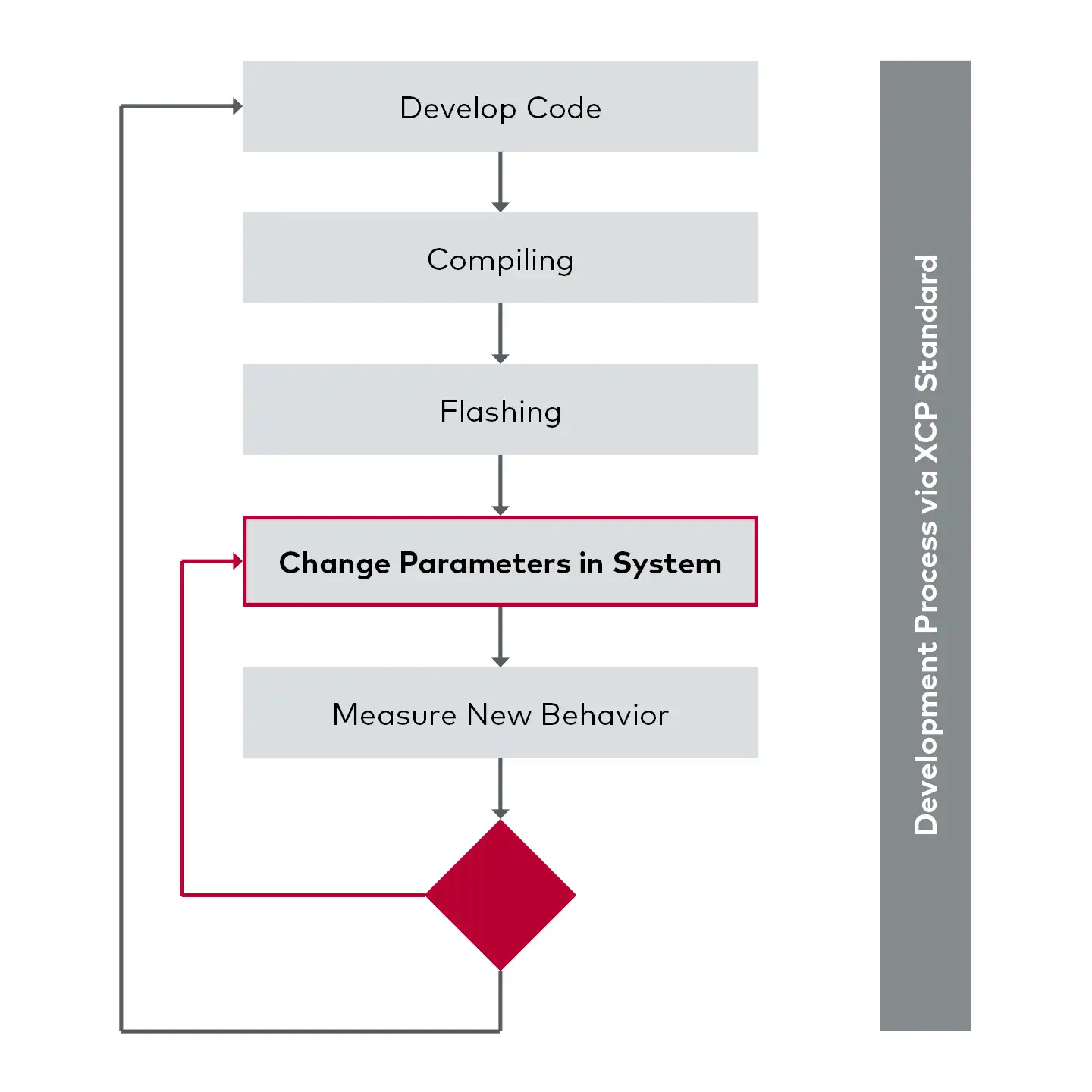Speed Up the Process With XCP
Besides code generation, parameterizing the application to a specific embedded system is an extensive task. Parameters are changed, for example, to set the system to a certain state, to simulate a switching state or to change the behavior of a controller.

In a typical development process, it is necessary to make the changes in the code. In order for the changes to become active in the embedded system, compilation and flashing must be done with each change. This is different in a development process with the standard protocol XCP:

Faster and More Flexible With the Universal XCP Protocol
The "eXtended Calibration Protocol" allows read and write access to the memory of the embedded system.
Any number of parameters can be changed at runtime. The parameters are no longer changed in the code with subsequent compiling and flashing, but simply and quickly via the user interface.
To check the system, the measurement data is recorded directly via XCP. The acquisition of the measurement data is triggered by events in the embedded system (e.g. end of a time slot).
The data are always related to each other in time.Which data is measured is not specified in the code. It is done through the configuration of the measurement and parameterization tool. The embedded system becomes a white box.
XCP is designed as a master-slave solution. The XCP driver runs in the embedded system as access to the system's memory. CANape is the XCP master and the universal tool for parameterization and measurement. It is also used to manage parameter sets of any size and to evaluate the measurement data.
The options for evaluating measurement data range from visualizing the data to using mathematical functions to automated data analysis with report generation.





